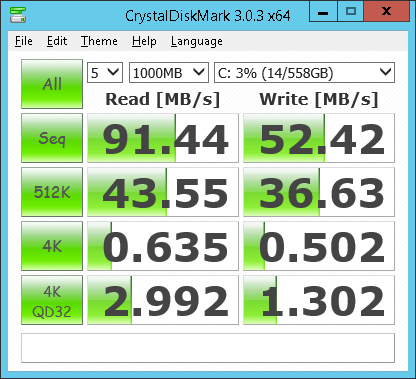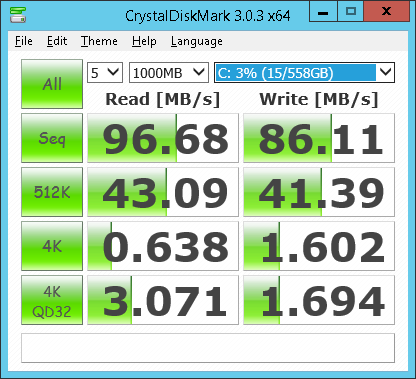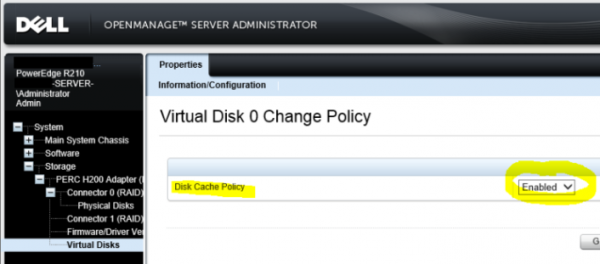Dell H200 Flash to It Firmware – Procedure for Dell Servers

When scoping out new servers for customers, we usually wait towards Dell, equally their boxes have the right mix of price, performance, expandability, and quality that nosotros strive for. RAID card options these days are adequately plentiful, with our sweet spot usually catastrophe upwardly on the
PERC H700 series
cards that Dell preinstalls with its midrange to higher end PowerEdge server offerings.
But recently we were forced into using i of its lower cease RAID cards, the H200 PCIe offering. This internal card was i of the few defended RAID options certified to piece of work in a refurbished server we had to put back into product, a Dell R210 1u rack unit. The specs looked fine and dandy in nearly all respects, except for ane area that I like to avoid: the lack of dedicated battery backed flash enshroud.
This is clearly denoted on Dell’s full
PERC rundown
site. Y’all can dive into the benefits of BBF on this first-class
Dell whitepaper. For the uninitiated, battery backed flash caches on RAID cards allows for near bulletproof data safe in the face of power failure, while increasing performance of RAID arrays considerably.
I didn’t recollect going with an H200 for an R210 refurbishment would be the terminate of earth. Even lacking a defended cache unit on the card, I knew full well that disk drives in a RAID have their ain onboard enshroud that works pretty well on its own. Heck, almost drives made in the last ten years have some form of dedicated cache infinite to provide workstations some performance benefits of writing to cache before writing to the disk.
The appearance of SSDs has rendered the need for caching mechanisms nigh extinct, but the reality of the state of affairs in the server earth is still that spinning disks make upward a bulk of the current and ongoing new server installations. Until SSD prices come downwards to the cost/GB levels of what SATA or SAS tin provide, spinning hard drives volition be the cream of the crop for the foreseeable future.
And this described the exact state of affairs we were in for this customer Dell R210 rebuild. We paired a dual set of (rather awesome)
Seagate 600GB SAS 15K
drives together in a RAID 1 for this H200 controller then that nosotros could pass a unmarried book upward to Windows Server 2012 R2. Our storage needs for this client were rather low, so employing Windows Storage Spaces was a moot point for this rollout. It also doesn’t assist that the R210 only has a pair of 3.v-inch internal bulldoze bays; not the 4-8 hot swap bays we commonly have at our disposal on T4xx serial Dell servers.
The trouble? After we loaded on a fresh re-create of Windows Server 2012 R2, things just seemed strange. Tedious, every bit a matter of fact.
Too dull
for condolement. All of the internal hardware on this server tested out just fine. The hard drives were brand new, along with the RAID card. Even the SAS cablevision we used was a brand new Startech
mini SAS unit, freshly unwrapped from the factory, and otherwise testing out fine.
It seems that we weren’t alone in our languor using default settings on the PERC H200 carte du jour. The Dell forums had numerous posts similar
this
describing issues with speed, and the fine folks at Spiceworks were seeing the
same problems. After some Googling, I even found sites like
this one by Blackhat Inquiry that detailed all-encompassing testing washed on these lower end RAID cards proving our suspicions truthful.
Most people are recommending that these depression end H200/H300 cards be replaced advert hoc with H700 and above level cards, but this wasn’t an option for u.s.a.. The Dell R210 is rather limited on what RAID options it will piece of work with. And seeing how many other parts we doled out coin for on this particular server, going dorsum would take proved to be a mess and a half.
What Is Dell Doing to Cripple the Performance on These Cards?
I didn’t desire to accept suspicion at face value without some investigation of our own. While collective hearsay is rather disarming, I wanted to see for myself what was going on here.
The culprit at the centre of these performance issues seems to be Dell’southward boneheaded policy of
disabling the native deejay cache
on SAS drives, even though they seem to leave it enabled for SATA disks as a matter of default configuration for H300 level controllers.
Blackhat Inquiry
pinned
a nice screenshot of this language in a Dell user manual:

Since we are using the H200 card on our R210, it wouldn’t thing if we had SATA drives in our RAID array. They were going to disable the cache
regardless.
Dell is going out on a limb here to make the lives of server admins rather hellish in situations where depression end RAID cards are in use. Selling such lower finish RAID cards without BBF is not my event — cutting costs on lower spec’ed hardware is the name of the game.
But to assume that those installing these servers aren’t educated enough to be using bombardment backup units in any way? That’s a scrap presumptuous on its role, and honestly, anyone installing servers into a production environment without proper battery backup power to the core system likely shouldn’t be in the commuter’s seat.
I know very well information technology tin happen, and likely does happen (I’ve seen it first paw at customer sites, so I digress), but then again, you tin can assume lots of things that may or may not be washed. A automobile may be purchased with AWD, and a motorcar manufacturer may disable the functionality if the vehicle is sold in Arizona, bold that the commuter volition never encounter snow. Is that
potential
reality something that should be used to make up one’s mind configuration for all users of the product? Of course non.
And so Dell disabling the cache on difficult drives for users of its low end RAID cards is a bit of an overstepping of boundaries in my stance. 1 that has likely caused, judging by what I am reading, legions of PERC purchasers to completely dump their product for something else due to an incoherent decision past Dell’s server team.
I decided to practice a little testing of my ain in an endeavor to resurrect this server rebuild and not have to move to a plan B. All firmware was updated on all ends — server BIOS, RAID card fw, besides as the firmware on the difficult drives. We made sure the latest PERC driver for this carte du jour was pulled downward onto the server (which happened to come from Windows Update).
Prior to enabling the local cache of the underlying disks, hither are the results of a unmarried run of CrystalDiskMark iii.0.3:

Not terrible numbers, but I knew something was up, and seeing how anybody on forums was upwards in arms over this H200 controller, turning that cache policy back on was probable a requirement at this point for workable performance.
I ended up using LSI’south MegaRaid Manager utility to get the enshroud enabled on the carte, and hither are the numbers nosotros saw later a full server reboot:

The biggest modify from prior to the cache beingness enabled? Await at the sequential write effigy with caching at 86.11MB/southward compared to the pre-caching effigy of 52.42 MB/due south. That’s more than a 64 percent modify for the better — pretty darn big if y’all enquire me.
The pair of 4K write tests experienced decent boosts, as did the sequential read number ever and then slightly, which I’yard not sure can be directly attributed to the cache enablement (but I may be wrong). The 512K write exam went upwards slightly, too. All in all, flipping a single switch improved my numbers across the lath.
Is Dell crippling these cards by turning off the native HDD cache?
Most definitely, and the numbers above prove it.
How Can You Easily Rectify This Trouble?
While I used the LSI MegaRaid Manager utility (from the maker of the actual card that Dell rebrands), you lot can utilise the more kosher Dell OpenManage Server Administrator utility that is tailor fabricated for overseeing Dell servers. It’s available for
gratuitous download
on any supported Dell PowerEdge unit (nearly every one in being), and it only takes a few minutes to install.
After going into the utility, just navigate down into the virtual disk(southward) in question, and yous will detect the Disk Cache Policy as fix to “disabled” most probable (if information technology’southward an H200, most definitely). Just flip the selection to Enabled and hit save, and reboot your box merely to ensure the change takes place.

One time your server comes back up, you volition have the performance improvements that local cache can provide. While not as powerful in whole every bit a dedicated BBF similar on the H700/H800 RAID cards from Dell, this is as good as it’south going to get.
Run your own tests to meet what kind of results you are seeing.
CrystalDiskMark
is a corking utility that tin mensurate disk bulldoze performance on any Windows system, including servers, and is a adept baseline utility that can tell yous what kind of numbers you are getting from your drives.
Should Dell continue to cripple hereafter generations of depression end RAID cards by doing this to customers? I hope not. The safety of your server data is up to you as the client in the end, and if you lot cull non to employ a proper battery backup power source similar an APC or Tripp Calorie-free unit, and so and so be it.
But having to dig through forums to see why my H200 card is behaving abnormally tiresome, none of which is from my own doing in misconfiguration of whatever sort, is downright troubling.
Here’southward hoping someone from Dell is reading the legions of forum posts outlining this dire situation and changes their opinion on newer RAID cards for hereafter servers. Trimming features off your RAID cards is adequate practice, but not when you lot begin forcing otherwise default functionality off on deejay drives that offer caching.
Long story brusque? Stick to getting more than capable Dell RAID cards, like the PERC H700 series units, when possible. Yous can avoid this necessary roundabout then birthday, and you lot’ve got yourself a higher quality, more than capable RAID card, anyhow.
Photo Credit:
nito/Shutterstock

Derrick Wlodarz is an It Specialist who owns Park Ridge, IL (USA) based technology consulting & service companyFireLogic, with over eight+ years of It experience in the individual and public sectors. He holds numerous technical credentials from Microsoft, Google, and CompTIA and specializes in consulting customers on growing hot technologies such equally Office 365, Google Apps, cloud-hosted VoIP, amid others. Derrick is an active member of CompTIA’s Subject Matter Skilful Technical Advisory Council that shapes the hereafter of CompTIA exams beyond the world. Y’all can reach him at derrick at wlodarz dot cyberspace.

